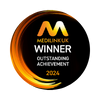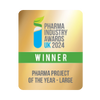Currently approximately 9 out of 10 new drugs entering clinical trials will fail before reaching approval. Many of these drugs will fail due to problems with ADME (absorption, distribution, metabolism and excretion) rather than lack of efficacy. One of the more common issues associated with ADME is the need for increasing bioavailability. Therefore, it is becoming more and more apparent that low bioavailability risk mitigation should occur during the earlier stages of drug formulation development.
Increasing bioavailability is a frequent issue when formulating orally administered dosage forms, and is a result of both chemical and biological factors. Both of these factors must be considered before embarking on a formulation approach. Only absorption limited bioavailability issues can be improved by application of enabling formulations strategies.

The most commonly encountered physiochemical causes of low bioavailability that can be overcome with the application of a good formulation strategy, are lack of water solubility and / or poor permeability.
Considering the time and resources required to introduce a new chemical entity into a clinical program, it is clear that an early accurate selection of the best formulation strategy is an obvious way to: de-risk the process, increase the probability of success and reduce the timeline required for optimisation of the product.
Once a compound is identified as having low bioavailability due to poor solubility there are a wide range of enabling technologies available to the formulator to overcome these issues; selecting which technology to use is not always a clear-cut decision. Do you try out each one in turn which takes time and at what point do you decide a formulation is not working before trying a different strategy; thus using up valuable time and resources and potentially prematurely ditching a potential drug product from the development pipeline before exploring all the options.
In most instances early challenges to generating sufficient data to support a development project include time, money and availability of drug substance.
At Upperton we offer a formulation strategy platform, UpperSolv™ and UpperSolv™+that can help our clients with this selection of enabling technology, generate early data to support their development decisions and prevent common reasons for failure in a cost effective and time efficient program.
UpperSolv™ allows rapid, tailored parallel manufacture and testing of an API using a range of enabling technologies that Upperton can scale-up and translate into clinical dosage forms; including micronisation, thermo-setting lipid-based formulations, generation of stable amorphous state by milling and formation of amorphous solid dispersions by spray drying. These strategies and formulation prototypes can then be tested in parallel and compared using standard in vitro testing; such as dissolution testing (UpperSolv™) or for more comprehensive and biorelevant comparison, the prepared formulations can be rapidly tested in a small animal model to generate a comparative PK assessment (UpperSolv™+). Once this data is critically reviewed an informed decision can be made as to which enabling technology presents the best chance of success when translated into a formal clinical phase of development.
The UpperSolv™ Process
Poor water solubility of an compound can be the result of two main mechanisms:
- Dissolution rate limited solubility – where the rate at which the compound dissolves is simply a physical function of the available surface area.
- Solubility rate limited – where there is a limit as to how much of the compound can be in solution due to its chemical structure.
When poor water solubility is limited by dissolution rate, a relatively simple process of particle size reduction will increase the surface area available for solubilisation; this will improve solubility and in turn increasing bioavailability. This particle size reduction can be achieved by several mechanical means including most commonly micronisation.
For APIs limited by their solubility rate, then a more comprehensive process of identifying the most appropriate enabling technology to overcome the inherent physiochemical properties of the compounds might be necessary.
What the UpperSolv™ screen process entails is:
i. Solubility screen where the API is dissolved with a range of solvents, co-solvents and solubilising excipients.
ii. Applying the selected enabling technologies that Upperton can scale and translate into clinical formulations, including:
- Dissolving or suspending the API in lipid-based formulations that can be filled into hard shell capsules.
- Co-milling the API with suitable polymers to induce a stable amorphous state and formulating / filling into capsules or compressing into tablets
- Formation of an amorphous solid dispersion by spray drying and formulating / filling into capsules
iii. Manufacturing prototypes / proof of concept formulations.
iv. In vitro testing such as dissolution testing.
v. In vivo pharmacokinetic (PK) testing using a small animal.
Depending on the agreed study the adaptive protocol can be modified to suit the client requirements. For each of the potential technologies selected one or more formulations can be produced and tested. For example, within the amorphous solid dispersion selection several polymers could be compared or several polymers to drug ratios could be prepared and tested.
The protocol has been designed to be completed using minimal API (typically around 5 grams) producing and testing (including the PK assessment) up to 6 formulation variants in 8 weeks.
The Advantages of UpperSolv™
The advantages of implementing UpperSolv™ into your early development strategy include:
- Rapid evaluation of a range of enabling technologies achieved with minimal drug
- Rapid comparative PK assessment to support formulation strategy selection
By providing this integrated biopharmaceutical and formulation approach UpperSolv™+ will result in scientific, data driven decision making and ultimately in selection of the most appropriate formulation strategy maximising the opportunity for a successful clinical development project; especially in regards to increasing a formulation’s bioavailability.
Get in touch.
If you’re looking to work with a CDMO that can support your product from preclinical development to market and beyond, then we’re here to help.





